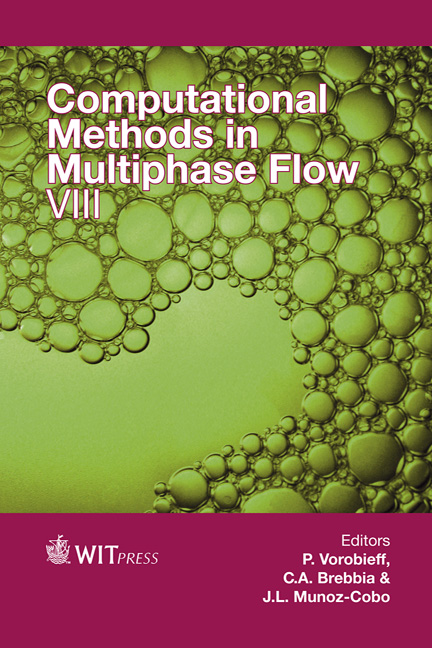Cavitation Modeling Using Compressible Navier–Stokes And Korteweg Equations
Price
Free (open access)
Transaction
Volume
89
Pages
11
Page Range
425 - 435
Published
2015
Size
642 kb
Paper DOI
10.2495/MPF150361
Copyright
WIT Press
Author(s)
T. Ait Ali, S. Khelladi, L. Ramirez, X. Nogueira
Abstract
A high accurate finite volume method based on the Moving Least Squares (MLS) approximation is used for the resolution of compressible Navier–Stokes and Korteweg (NSK) equation in order to simulate the inception of bubble cavitation, its detachment and its collapse on the upper surface of a 2D NACA 0015 hydrofoil. To properly simulate these phenomena, we use the homogeneous equilibrium model (HEM) whose main assumption is that we consider a diffuse liquid–vapor interface with thickness. To take account of the surface tension force through the NSK equations, we need to compute a third derivative of density.
In this study, we present evidence for the effect of surface tension on the maximum pressure reached during the collapse of a cavitation bubble. It was noticed that increasing the surface tension inevitably leads to an increase in the pressure of the collapse. Beyond a certain value of λ (which depends on velocity, incidence and other parameters) the cavitation bubbles are more difficult to separate from the main cavity that forms on the upper surface of the hydrofoil.
Keywords
cavitation, homogeneous model, Moving Least Squares, surface tension, Korteweg tensor, hydrodynamic, Tait equation of state for water





